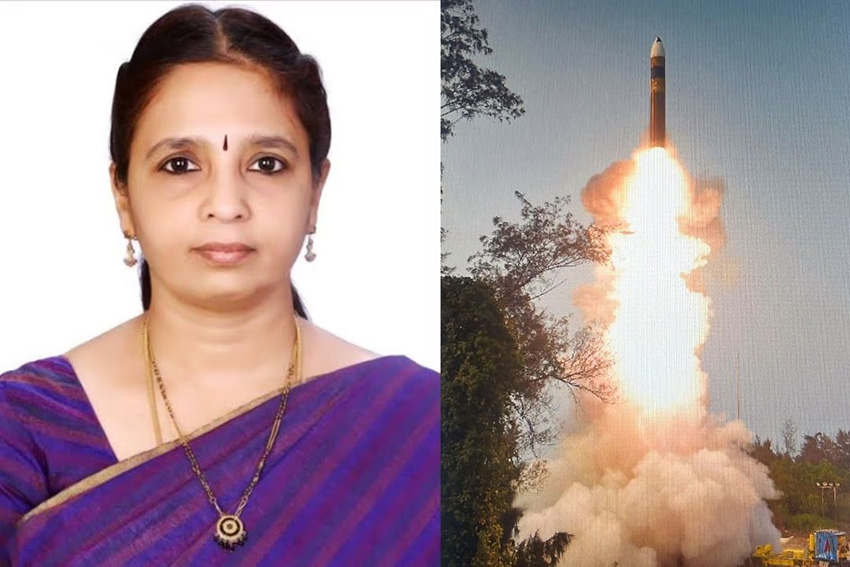Sheena Rani, the scientist behind India’s successful Agni-5 missile test
By R. Anil Kumar
-
The nation witnessed a poised moment from Dr A.P.J Abdul Kalam Island off the Odisha coast last Monday, 11 March. Mission ‘Divyastra‘ or the ‘Weapon of the Gods’ has successfully demonstrated the first flight equipped with multiple warheads
-
Agni-V, the supersonic missile project of India widely range from 5000 Km and covers almost all of India’s neighbouring countries
-
The Agni 5 groundbreaking project is led by Sheena Rani, a distinguished scientist from Hyderabad’s missile complex, who has been pivotal in the research and development of Agni missile systems since 1999
-
Under the guidance of inspirational figures like former President Dr A P J Abdul Kalam and missile technologist Dr Avinash Chander, Sheena Rani’s contributions to the Agni series have been invaluable
-
“I am a proud member of the DRDO fraternity that helps protect India”: Sheena Rani
Bangalore, March 14. Scientist Sheena Rani, native of Kerala’s Thiruvananthapuram, helmed the team of Defence Research Development Organisation (DRDO) scientists behind the modified edition of Agni-V.

The senior scientist at DRDO is currently the missile project program director at Hyderabad-based Advanced Systems Laboratory (ASL).
The 57-year-old scientist was born in Thiruvananthapuram and lost her father while she was in 10th standard. Thereupon her mother looked after the family. She did her engineering from the College of Engineering Trivandrum (CET).
Her husband, PSRS Sastry, is also involved in the missile project at DRDO and supervises the Kautilya Satellite launched by ISRO in 2019.
India marked a significant achievement with the successful test of the Agni-5 missile, featuring multiple warheads, announced by Prime Minister Narendra Modi as ‘Mission Divyastra’.
Leading this groundbreaking project was Sheena Rani, a distinguished scientist from Hyderabad’s missile complex, who has been pivotal in the research and development of Agni missile systems since 1999.
The project marks a significant milestone in India’s missile development program. Rani, who has been immersed in missile technology since 1999 as part of the Defence Research Development Organisation (DRDO), said, “I am a proud member of the DRDO fraternity that helps protect India.
With roots in Kerala’s College of Engineering and experience at the Vikram Sarabhai Space Center, Rani follows in the footsteps of renowned missile technologist Tessy Thomas.
Rani’s journey into the DRDO began following India’s Pokhran Nuclear test in 1998, where she channeled her expertise in electronics and communications engineering towards advancing India’s missile systems.
Under the guidance of inspirational figures like former President Dr A P J Abdul Kalam and missile technologist Dr Avinash Chander, Rani’s contributions to the Agni series have been invaluable.
Her husband, P S R S Sastry, shares her passion for missile technology, further enriching their household with expertise.
The recent test of the Agni-5 missile signifies India’s entry into the league of nations, possessing Multiple Independently Targetable Re-entry Vehicle (MIRV) technology, a crucial advancement in regional geopolitics.
With the capability to deploy multiple warheads, each targeting different locations, the Agni-5 promises enhanced deterrence capabilities for India.
PM Modi lauded the efforts of the scientists behind this achievement, and posted on the same on social media platform X.
“Proud of our DRDO scientists for Mission Divyastra, the first flight test of indigenously developed Agni-5 missile with Multiple Independently Targetable Re-entry Vehicle (MIRV) technology”, he wrote.
Strategic experts say one of the key reasons for India to pursue the MIRV technology was an effort to overcome the Chinese ballistic missile defence system as such a technology can penetrate missile defences by using multiple genuine or decoy warheads.
There is also the additional benefit of having multiple targeting options and cost-effectiveness as one missile can strike at multiple tactical and strategic targets.
Moreover, the development of critical new weapon systems comes with the advantage of strengthening a state’s case to stake a claim for a place in future arms control negotiations.
Though she has been working with several DRDO units and missions, her part involves checking the overall strength of missiles. In 2016, she won the “scientist of the year award.”
Since 2016, India has been trying to test Agni-V. By 2024, Agni-V test-firing can range from about 5000 Km within India, the range of the whole of China and some parts of Europe. The countries that have been equipped with missiles with MIRV are the the US, Russia, the UK, China, and France.





